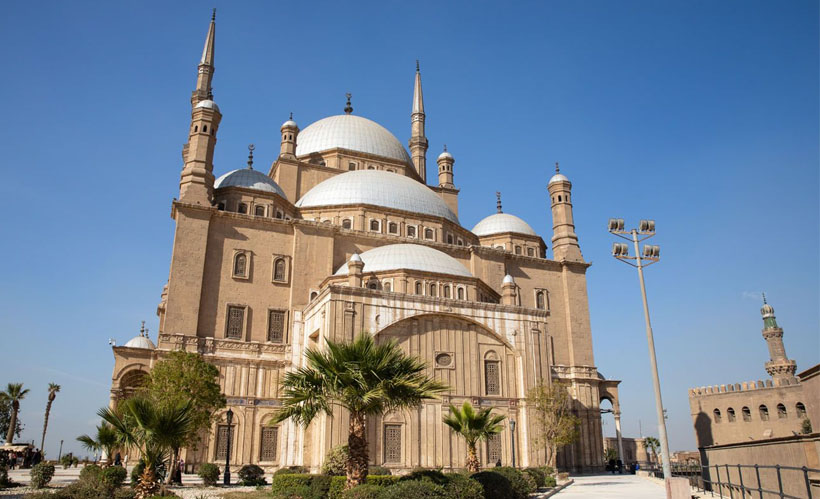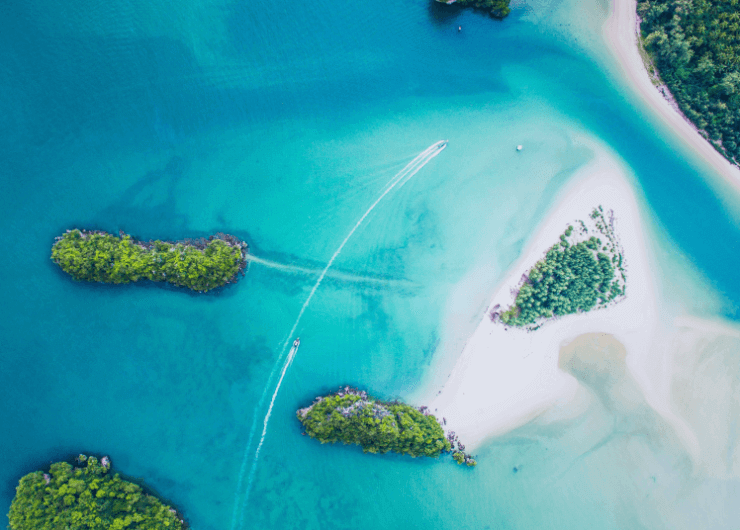Cultural, historical, adventure, and custom customized trips are just a few of the tours that Deluxe trips offer in Egypt and Jordan.

Perched upon the Mokattam Hills above bustling Cairo, the Saladin Citadel (also known as the Cairo Citadel or Salah El-Din Citadel) is one of Egypt's capital city most enduring and evocative monuments. A gem of Islamic Cairo, the medieval fortress encapsulates Egypt's medieval military architecture and rich Islamic heritage. Built in the 12th century by the legendary Muslim leader Salah El-Din Al-Ayyubi, the Citadel is a living museum that reflects narratives of resistance, governance, and religiosity.
In this piece, we shall examine the Saladin Citadel's historical significance, architectural beauty, and cultural value. Perhaps you are preparing to visit Cairo or perhaps you're just a history enthusiast, and you will learn from this article a greater understanding of one of Cairo's finest monuments in Islamic history.
The Citadel was constructed by Salah El-Din in 1176 AD, also known in the West as Saladin, Egypt's and Syria's first sultan and the founder of the Ayyubid dynasty. Its position atop Mokattam Hill gave it a panoramic view of Cairo and easy defense against Crusader attacks. Salah El-Din, heroic warrior of the Crusades and venerated leader, intended the Citadel to be a fortress of war as well as a symbol of Islamic dominance and solidarity.
Surprisingly, stones used in constructing the Citadel were believed to have been reused from the minor pyramids of Giza. Recycling this old material symbolized a new era of Egyptian history, away from Pharaonic towards Islamic occupation.
Whether a history enthusiast, an architecture enthusiast, or simply a traveler looking to experience the best of Cairo, the Saladin Citadel promises an experience that's simply unforgettable.
Various rulers in the centuries added their own constructions and elements to the complex. The Citadel is not one building but a walled complex made up of mosques, museums, palaces, and military barracks.
The most striking building in the Citadel is the Mosque of Muhammad Ali, constructed between 1830 and 1848. This Ottoman mosque, with its high minarets and big central dome, is generally the first thing one sees. Made of alabaster stone, the mosque is a defining feature of modern Islamic Cairo and a sign of Turkish architectural influence.
Inside, its large prayer hall, with red carpets and chandeliers, inspires awe. The mosque also contains the tomb of Muhammad Ali Pasha, Egypt's ruler credited with modernizing the country in the 19th century.
Built in the early 14th century, the Citadel's oldest mosque, it is a fantastic example of Mamluk architecture. Although smaller than the Alabaster Mosque, it's holy for its stunning arches, stone carvings, and preserved minaret.
The Military Museum in the Harem Palace displays weapons, uniforms, and military strategies utilized throughout the different eras of Egyptian military history. Next to it is the Police Museum, which narrates the history of Egypt's police organs.
For nearly 700 years, Saladin Citadel served as the center of Egypt's administration. From the Ayyubids to the Mamluks and ultimately the Ottomans, rulers used this fortress to control the city and its inhabitants. The walls of the Citadel were virtually impenetrable, and its elevated position gave its residents visibility to any incoming threat.
The Citadel was not only used for war. It was a city unto itself, having residences, shops, and areas to worship. It was also used to hold captives and as an arsenal for weapons.
Today, the Citadel is a leading historical spot to visit in Cairo and an essential stop on any Cairo day tour. Its blending of Islamic art, Ottoman architecture, and ancient military history gives a broad insight into the core of the city.
Tourists are rewarded with breathtaking views of the Cairo skyline and a far-reaching glimpse of the Giza Pyramids on clear days. Its convenient location also makes it easy to combine with a trip to Old Cairo, Khan El Khalili Bazaar, or Egyptian Museum.
The Saladin Citadel is a part of the vast Islamic Cairo district, which along with Al-Muizz Street, Sultan Hassan Mosque, and Al-Rifa'i Mosque constitutes a UNESCO World Heritage Site. It is a gate to Cairo's magnificent Islamic past and is spellbinding for everyone who is interested in Islamic architecture, Egyptian history, and cultural heritage.
The Cairo Saladin Citadel is not just a piece of history—it's a continuous reminder of Egypt's Islamic, political, and architectural past. From the battlefield genius of Salah El-Din to the sheer architectural wonder of the Muhammad Ali Mosque, this landmark site is continuing to awe and intrigue all who visit.
Discover now our answers to the most common questions that may come to your mind about tourism and trips to Egypt
Cultural, historical, adventure, and custom customized trips are just a few of the tours that Deluxe trips offer in Egypt and Jordan.
The Dead Sea, Petra in Jordan, the Pyramids of Giza, Luxor's historic temples, and many other famous sites can be expected to be explored with Deluxe Tours.
offer a hassle-free holiday, Deluxe Tours' packages generally include lodging, transport, meals, guided tours with experienced local experts, and entry fees to attractions.
Spring (March to May) and fall (September to November) offer the finest weather for sightseeing and outdoor activities, making those months the best times to visit Egypt and Jordan.
These two countries are close by, only a 1.5-hour flight apart, and when combined, offer a variety of distinctive experiences. We advise you to spend at least 12 days visiting both countries for a truly unforgettable experience
Combining the eclipse viewing with visits to historic sites like the Pyramids of Giza, the Valley of the Kings, and a Nile River cruise are highly recommended.
